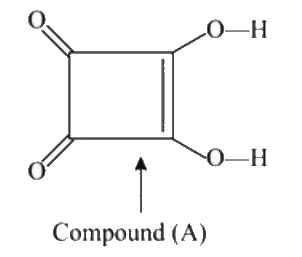Consider the following statements.
Metalloids have the characteristics of both metals and nonmetals.
All the elements on the left side of the periodic table are metalloids.
Select the correct statement.
Only I
Only II
Both I and II
None of the above
The correct Answer is:A
To solve the question, we need to analyze the two statements provided regarding metalloids:
1. Statement 1: Metalloids have the characteristics of both metals and nonmetals.
2. Statement 2: All the elements on the left side of the periodic table are metalloids.
Step 1: Analyze Statement 1
- Metalloids are indeed known for having properties that are intermediate between metals and nonmetals. This means they can exhibit characteristics of both categories.
- Examples of metalloids include boron (B), silicon (Si), germanium (Ge), arsenic (As), antimony (Sb), and tellurium (Te).
- Therefore, Statement 1 is correct.
Step 2: Analyze Statement 2
- The periodic table is divided into metals, nonmetals, and metalloids.
- The left side of the periodic table primarily consists of metals. Elements such as alkali metals, alkaline earth metals, and transition metals are found on the left.
- Metalloids are actually located along the zig-zag line that separates metals and nonmetals, which is typically towards the right side of the periodic table.
- Therefore, Statement 2 is incorrect.
Conclusion:
- Based on the analysis, the correct statement is Statement 1, while Statement 2 is false.
Final Answer:
- The correct statement is: Metalloids have the characteristics of both metals and nonmetals.
---
2. Statement 2: All the elements on the left side of the periodic table are metalloids.
- Metalloids are indeed known for having properties that are intermediate between metals and nonmetals. This means they can exhibit characteristics of both categories.
- Examples of metalloids include boron (B), silicon (Si), germanium (Ge), arsenic (As), antimony (Sb), and tellurium (Te).
- Therefore, Statement 1 is correct.
- The periodic table is divided into metals, nonmetals, and metalloids.
- The left side of the periodic table primarily consists of metals. Elements such as alkali metals, alkaline earth metals, and transition metals are found on the left.
- Metalloids are actually located along the zig-zag line that separates metals and nonmetals, which is typically towards the right side of the periodic table.
- Therefore, Statement 2 is incorrect.
- Based on the analysis, the correct statement is Statement 1, while Statement 2 is false.
- The correct statement is: Metalloids have the characteristics of both metals and nonmetals.
Similar Questions
Knowledge Check
- Question 1 - Select One
All the elements in a period in the periodic table have the same
Aatomic numberBelectronic configurationCatomic weightDvalence shell. - Question 2 - Select One
All the elements in a group in the periodic table have the same
AAtomic numberBElectronic conifigurationCAtomic weightDNumber of electrons in the valence shell - Question 3 - Select One
All the elements in a group in the periodic table have the same
AAtomic numberBElectronic configurationCAtomic weightDNumber of electrons in the outermost shell or number of electrons for bonding
All the elements in a group in the periodic table have the same -
View SolutionWhich is the only non-metal placed at the left side of the Modern Periodic Table?
View SolutionElements in the firsdt column of the periodic table are called alkali metals. These metals have:
View SolutionConsider the following statements regarding Sommerfeld's model. Select the correct statement/s.
View SolutionConsider the following statements.
All the elements of d-block are non-metals.
Non-metals are react with oxygen to form basic oxide.
Select the correct statements.View Solution


